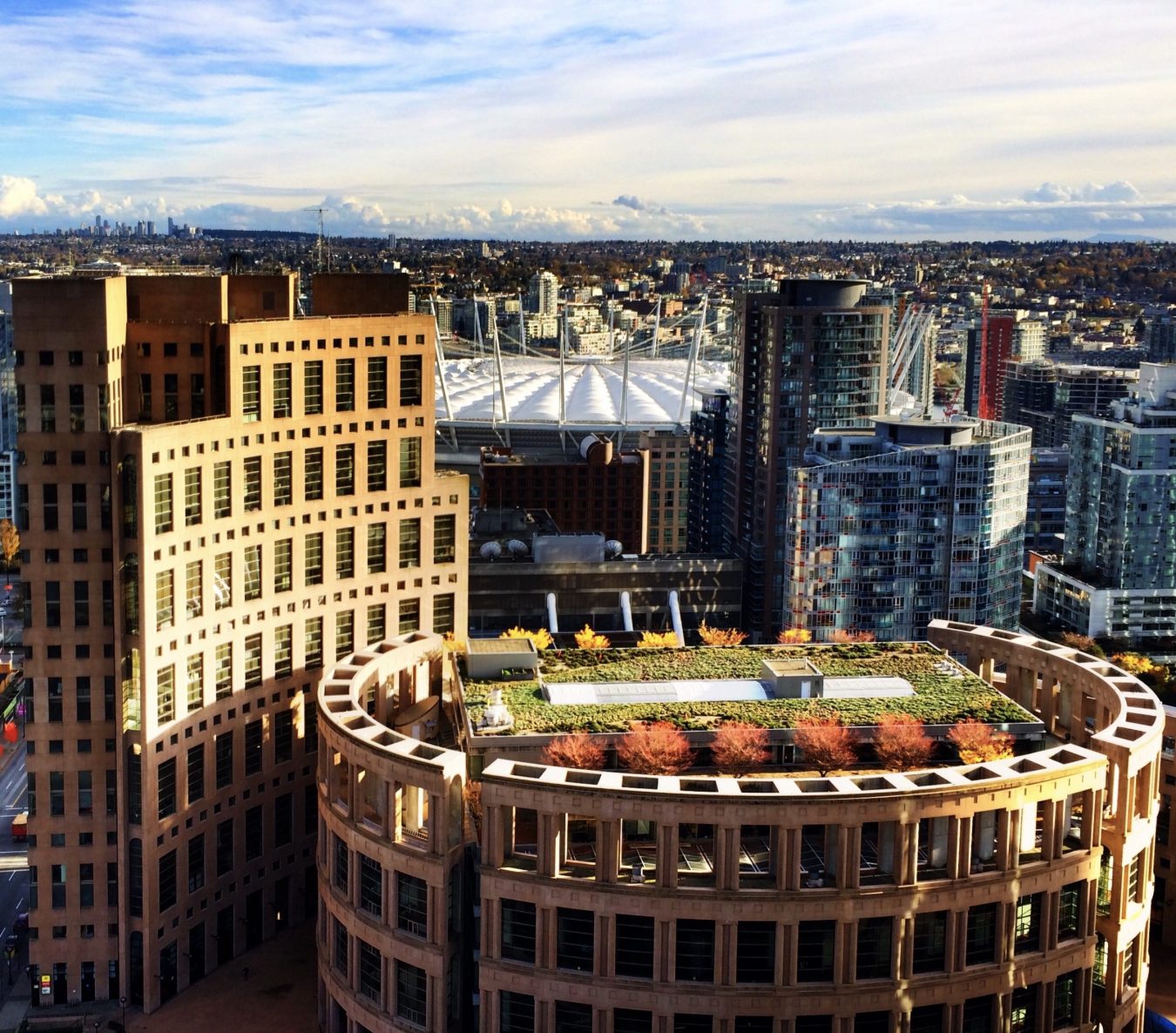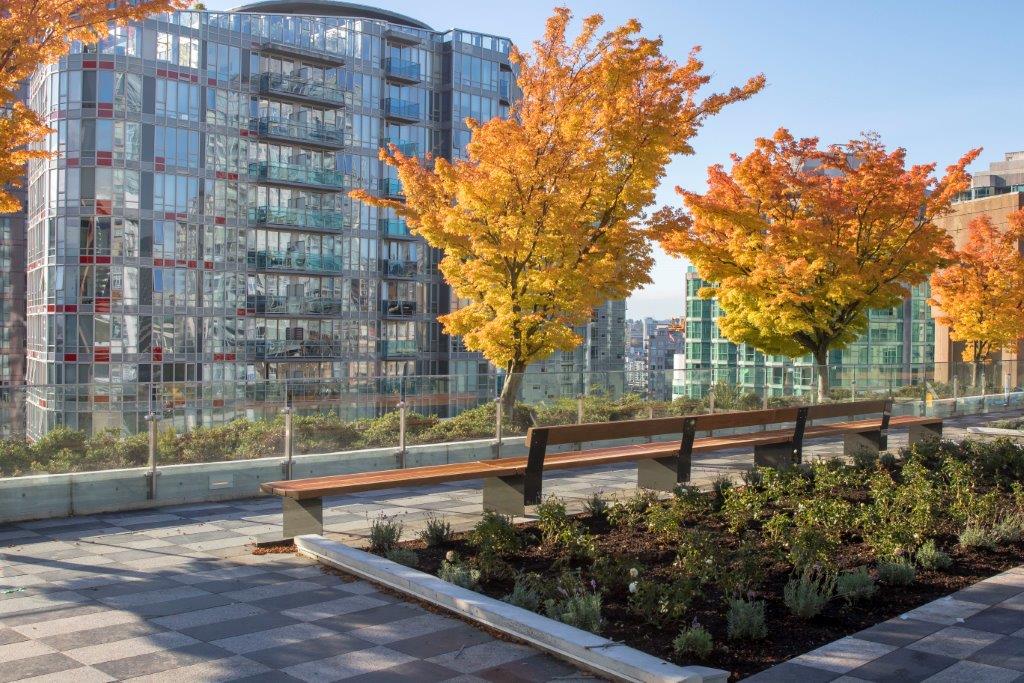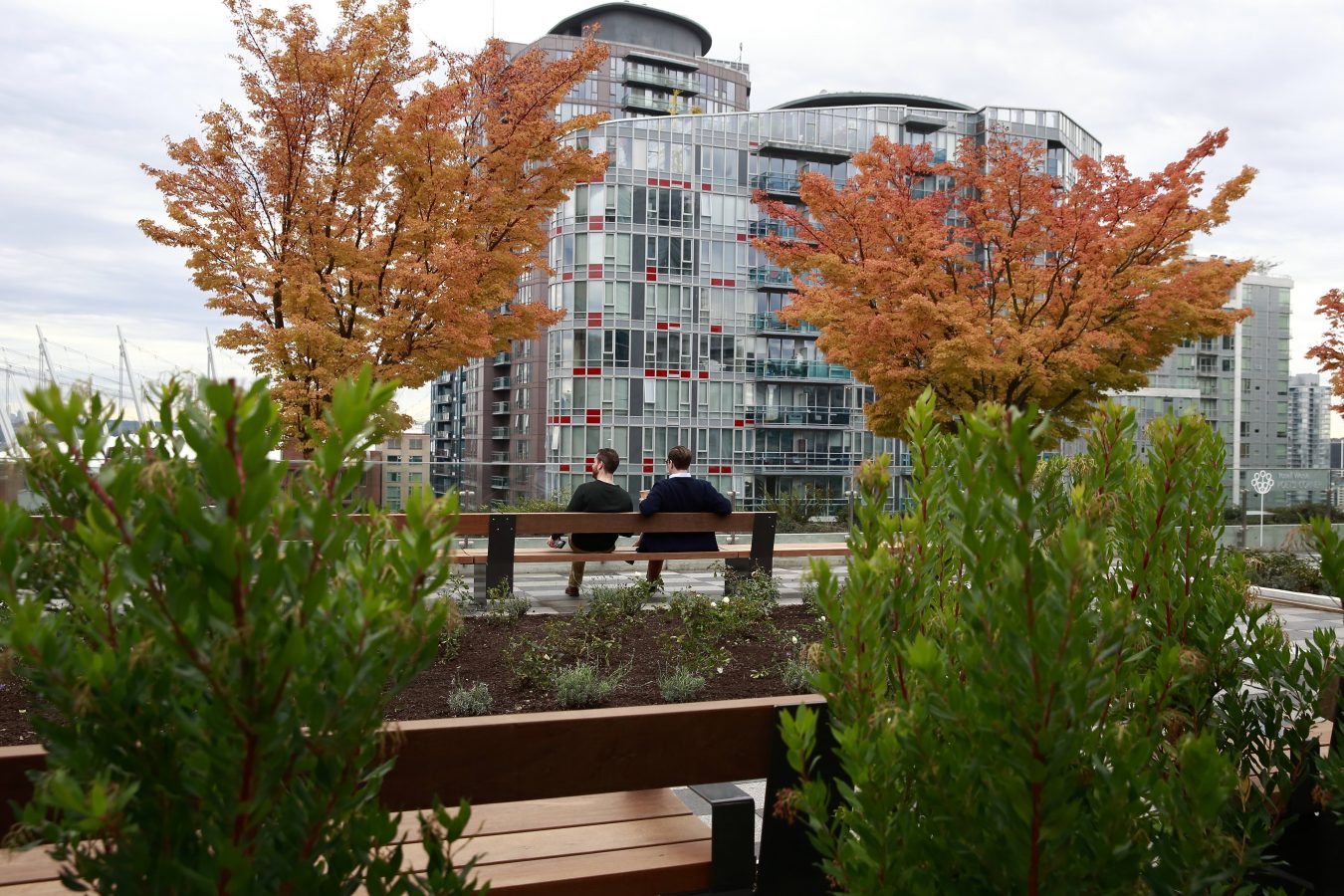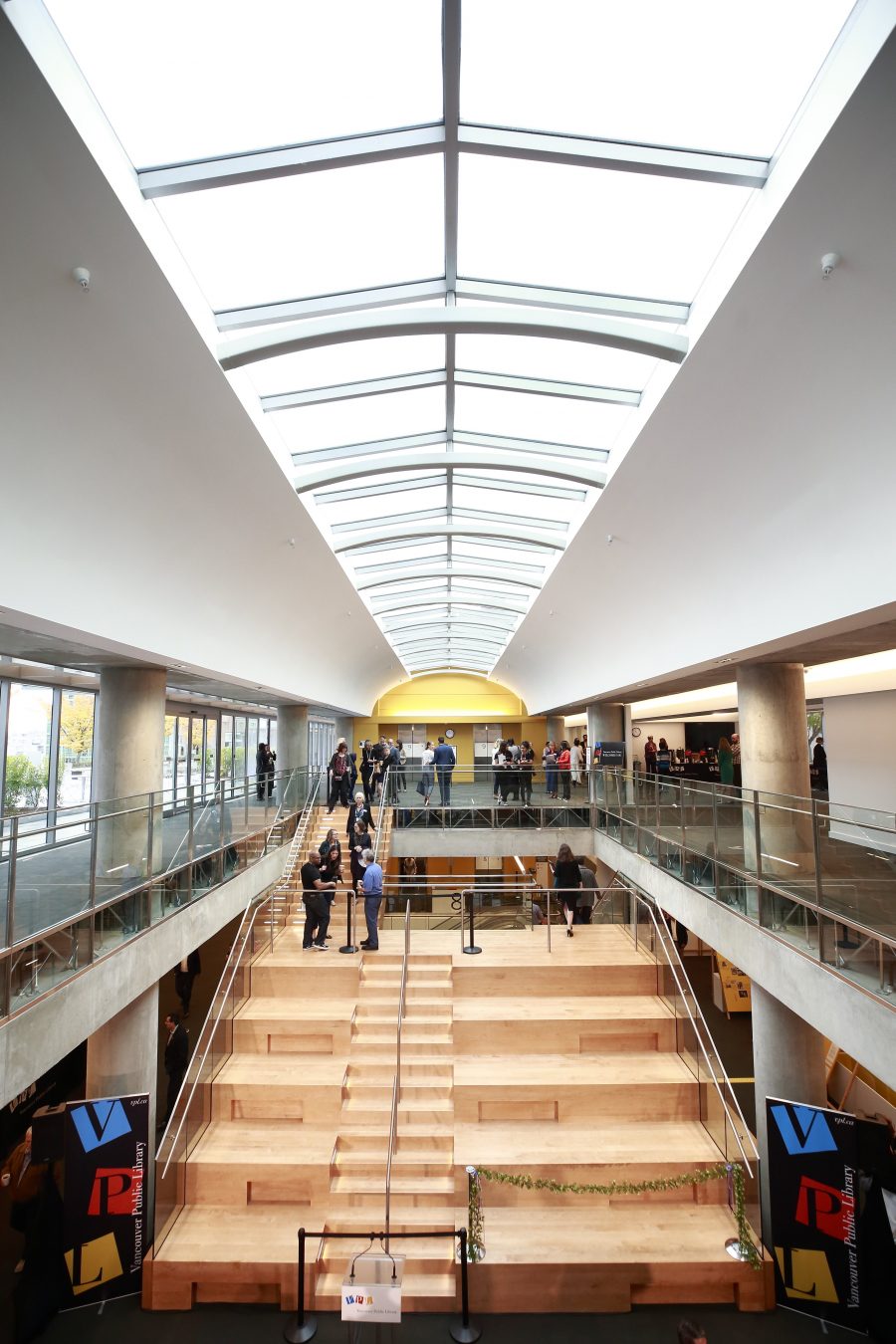The Vancouver Public Library central branch’s new rooftop garden has been a very long time coming.
Twenty-three years, to be exact. When the 42,000-square-foot, $16.8-million renovation project was opened to the public at the end of September 2018, it was the realization of an architectural vision that dates back to the building’s launch in 1995 as a place in the heart of the city for Vancouverites to gather and create.
“We wanted to make Vancouver a more engaged and connected city,” explains chief librarian Christina de Castell. “The Vancouver Foundation recently did a series of surveys and found that people are really looking for spaces to come together. They’re experiencing more loneliness. We’re seeing more families coming into the centre of Vancouver, and we know that there’s a real need for community spaces. That’s what we were thinking of here, and that’s one of the reasons for having the rooftop garden: to give people somewhere to escape and connect in the middle of the city.”
The project, which took four years to plan and roughly two to complete, brought back the team who designed the original library building and its (closed to the public) green roof: renowned Canadian architect Moshe Safdie and landscape designer Cornelia Oberlander (who, even in her late nineties, is still going strong). The garden and its connected terraces add approximately 8,000 square-feet of new space and have retained the original green roof’s Japanese maple trees, while adding a few arbutus ones for good measure. Other foliage includes lavender and honeysuckle, and seating is provided via benches made from Brazilian walnut: a wood known for its resistance to rot (essential in rainy Vancouver). While having a publicly-accessible rooftop was part of the initial Library Square concept dating back to the 1990s, the scope of the project and cost overruns prevented the plan from making it to the design stage. Instead, levels eight and nine of the library were leased to the provincial government for 20 years, and when that lease expired in 2015, the facility decided it was time to revisit the original plans.
Construction presented an interesting challenge, with engineers having to bring all the necessary materials up from street level, including two floors’ worth of escalators and 250 cubic yards of soil (which had to be blown up to the roof through a hose). And most impressive of all, de Castell notes, the building managed to stay open throughout the process. “A lot of construction projects wouldn’t keep on operating during this kind of work,” she says. “But the library is such an important building for the people of Vancouver. We see about 5,000 visitors a day. So it was very important to us to stay open. And we really saw that love of the library through the entire project, because visitors still kept coming.”
There is more on levels eight and nine than just the garden, too; also added is a Reading Room, an exhibition space, a Poet’s Corner, an 80-seat auditorium, and a grand staircase made of honey maple, which can be used as anything from a public seating area to a mini amphitheatre. “It’s inspiring artists and creators, even when they’re just standing on it,” de Castell muses. “I was talking to someone who composes music, and they were talking about composing something specifically for that space; I was talking to someone else who’s involved in an orchestra, and they were imagining a performance that could take place on the stairs. The way it’s already been inspiring those creators is wonderful to see.”
The expansion is just one more part of a broader reimagining of Library Square that has taken place over the past several years. Beginning in 2014, the central library’s holdings—some 1.3 million books—were reorganized to increase efficiency. An Inspiration Lab was added on level three (free recording studios in which Vancouverites can create music and podcasts), and in 2016, a musical instrument lending library, the first of its kind in the city, was added. So far, de Castell says, the response from the public to all of these changes has been overwhelmingly positive.
“People love it,” she says. “The seats are full in the Reading Room. People have taken ownership of it almost right away. And the fall weather has been so good that each day, many people have been out in the garden. They’re reading, they’re drawing, they’re taking selfies, they’re posting them on Instagram and sharing them with us. So we’re having a great chance to share in the public’s enjoyment of the new space.”
And although the garden and other community areas might be the most impressive of the central library’s new features, they won’t be the last; soon, level seven will be the new home of the City of Vancouver Archives and its collection of some one million photographs, 4,000 maps, and millions of historical documents dating back to the 1800s; and the Children’s Library, thanks to a $5 million donation from The Dilawri Foundation, is set to be revamped to include more play spaces and interactive zones. The overall philosophy, de Castell explains, is to recraft the library as a place for people to come together and engage—with their city, with their neighbours, with literature, and with their own imaginative impulses.
“We’ve gone through a lot of change,” she says. “We’re exploring this idea of a library as a gathering place, and a place that supports creativity. Because that’s what a library should be: a place for people to create and share stories.”
Read more from our Hidden Vancouver series.












